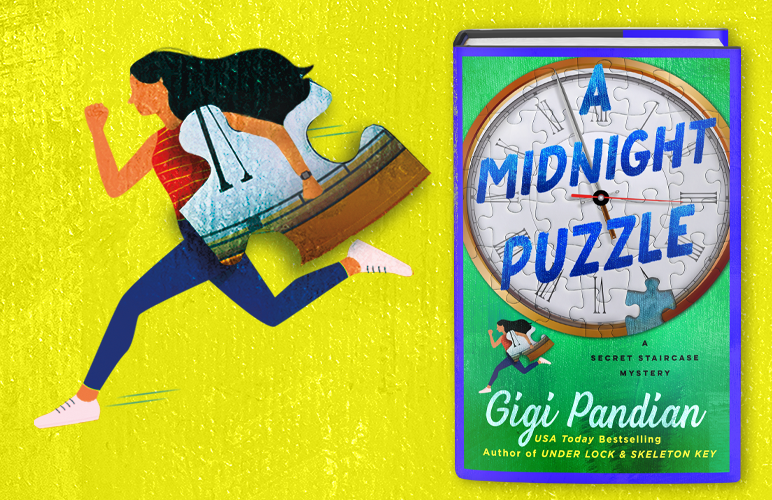
Otto Penzler's new collection.
In November I spoke on the panel “Murder in a Locked Room: Solving the ‘Perfect’ Crime” at Bouchercon, the world mystery convention. I wrote up a recap of the whole convention here, and I'm revisiting the panel in greater detail today because I've been on a locked room mystery kick.
Two things have renewed my interest:
Otto Penzler's new collection of locked room stories, The Black Lizard Big Book of Locked-Room Mysteries. 960 pages and 68 stories! As I write this, I'm about halfway through it. I've encountered many of the stories before, but there are many that are new to me.
French author Paul Halter, who is being hailed as the new John Dickson Carr—and for good reason. His plots are every bit as ingenious, and he uses supernatural overtones to great effect. Halter's books are being translated into English by John Pugmire and Locked Room International.
“Murder in a Locked Room: Solving the ‘Perfect’ Crime”
I'm a huge fan of locked room mysteries, so I was thrilled to be selected for the panel along with Jeffery Deaver, Janet Dawson, Laurie King, Marvin Lachman, and Bill Gottfried moderating. I wasn’t sure how many people would attend a panel on a mystery sub-genre most popular during the Golden Age of detective fiction, so it was heartening to see well over 100 people of all ages in attendance.

Murder in a Locked room panelists (left to right):
Marvin Lachman, Janet Dawson, Bill Gottfried, Gigi Pandian, Jeffery Deaver, Laurie King
Marv Lachman kicked off the discussion with a definition of locked room mysteries. The classic example is a murder victim found in a room sealed from the inside, with no way for a murderer to have escaped. But the term “locked room” is used more broadly for any “impossible crime” situation, such as an outdoor murder in a remote area with only the victim’s footprints in the snow.
Jeffery Deaver mentioned John Dickson Carr’s famous “locked room lecture,” a treatise inside his novel The Three Coffins that explains the overarching methods in which an impossible crime could indeed be possible. The specific methods used to carry out these theoretical ideas are endless, and therefore reading the lecture doesn’t ruin the solution of The Three Coffins or any other book.
Why are locked room mysteries so appealing?
We all agreed that they provide the ultimate puzzle. Not only is the reader baffled by who committed the crime and why, but also how. There’s a promise to the reader that there will be a satisfying resolution at the end of the book.
A secondary feature of many locked room mysteries is the Gothic, ghostly atmosphere that dominates the investigation—because if a crime is impossible, then surely it can only have a supernatural explanation. But that’s the trick of a good locked room mystery: like a good magic trick, what seems supernatural is in reality a clever illusion.

My John Dickson Carr bookshelf.
Stage magicians are therefore a natural for locked room mystery sleuths. Clayton Rawson’s Merlini character is a favorite of mine. Merlini appeared in several novels and over a dozen short stories. Rawson was a contemporary of Carr, and wrote most of his stories in the 1930s and 40s.

Clayton Rawson's novels featuring The Great Merlini.
Janet Dawson mentioned Agatha Christie as an author who is primarily thought of as the queen of puzzle plots more generally, though several of her books feature locked room mysteries. And Laurie King brought up Edgar Allan Poe’s “The Murders in the Rue Morgue” as one of the stories credited with creating the sub-genre.

Daniel Stashower, best known for non-fiction, also writes the Harry Houdini Mysteries.
Many present-day writers are carrying the tradition forward. Authors include Paul Halter, a French author with several novels translated into English by John Pugmire; Daniel Stashower, who writes the Harry Houdini mysteries; the prolific Bill Pronzini, who writes the Nameless detective series; and panelist Jeffery Deaver, who wrote an impossible-crime magician thriller for his fifth Lincoln Rhyme novel, The Vanished Man. There are also many modern Japanese authors writing in the genre. Many, but not all, have been translated into English—as our moderator Bill Gottfried learned when he accidentally ordered a Japanese locked room mystery printed in Japanese!
As for me, I haven’t yet pulled off writing a full-length locked room novel, but I love writing locked room mystery short stories. When I started writing my Jaya Jones Treasure Hunt Mystery Series, I created a small sidekick character who was a stage magician: Sanjay Rai, who performs under the moniker The Hindi Houdini. But Sanjay refused to remain a sidekick, so I’ve written several locked room short stories with him as the hero, beginning with “The Hindi Houdini” (that was the story short-listed for Agatha and Macavity awards).
For a handout at the Bouchercon panel, we compiled some of our favorite locked room novels, stories, anthologies, and reference guides. Here’s a portion of the list we gave out:
A “starter guide” to Locked Room Mysteries: Novel Recommendations from the Panelists
Note this is NOT an exhaustive list, but rather a few favorite novels from the panelists.
The handout given to attendees also included additional reference guides, anthologies, and short stories.
Edmund Crispin THE MOVING TOYSHOP
John Dickson Carr THE BURNING COURT
John Dickson Carr THE CROOKED HINGE
John Dickson Carr THE THREE COFFINS, aka HOLLOW MAN (includes Carr’s famous “locked room lecture”)
Carter Dickson THE JUDAS WINDOW
Carter Dickson A GRAVEYARD TO LET
Arthur Conan Doyle THE SIGN OF FOUR
Paul Halter, THE INVISIBLE CIRCLE
Keigo Higashino MALICE
Gaston Leroux THE MYSTERY OF THE YELLOW ROOM
Ellery Queen THE CHINESE ORANGE MYSTERY
Ellery Queen THE DOOR BETWEEN
Clayton Rawson DEATH FROM A TOP HAT
Daniel Stashower DIME MUSEUM MURDERS
Happy reading!





